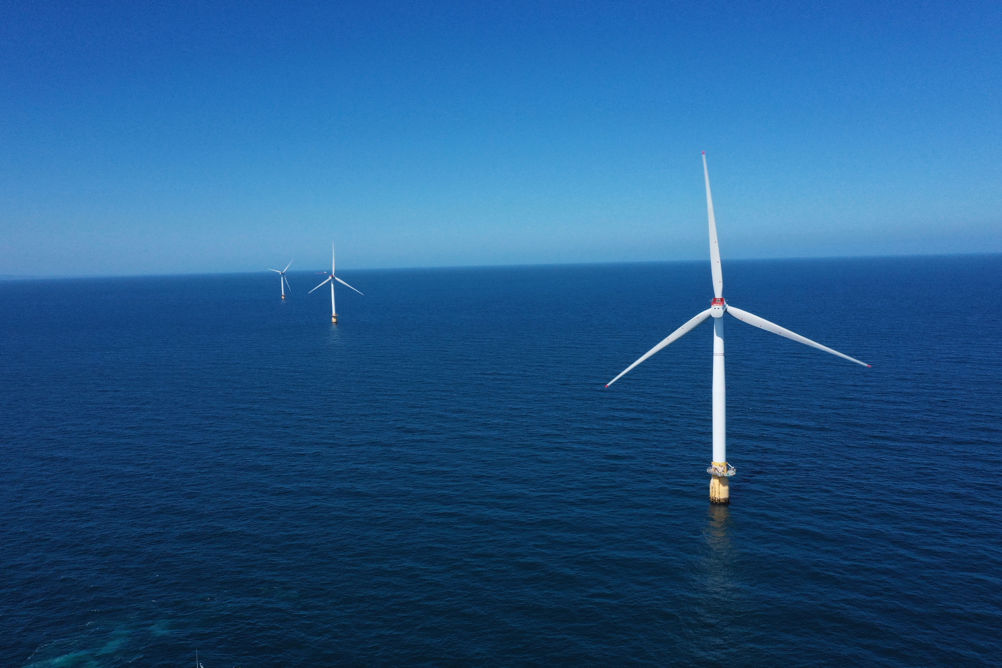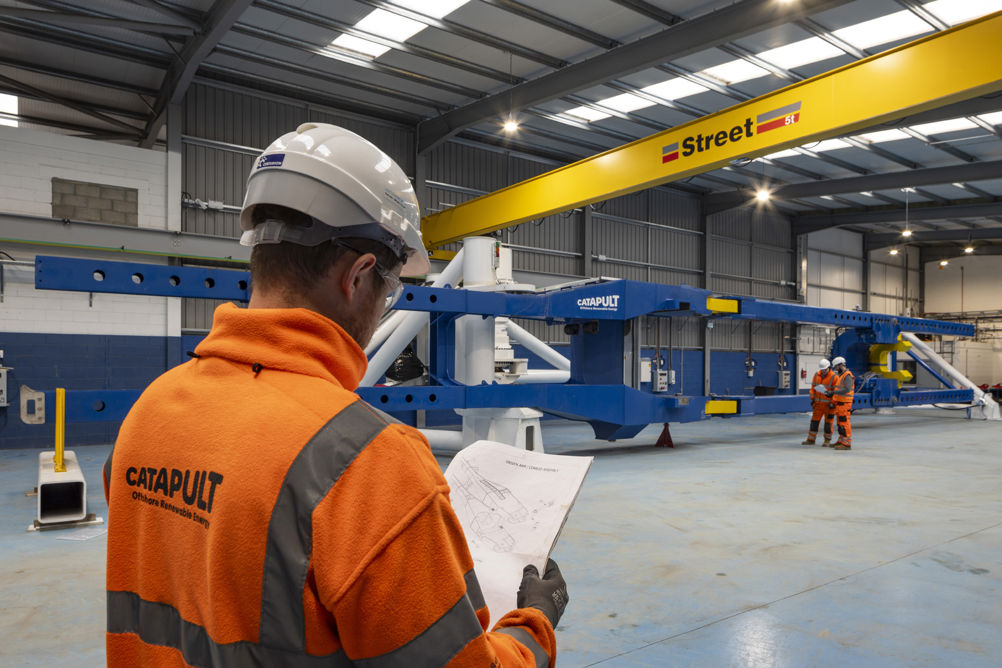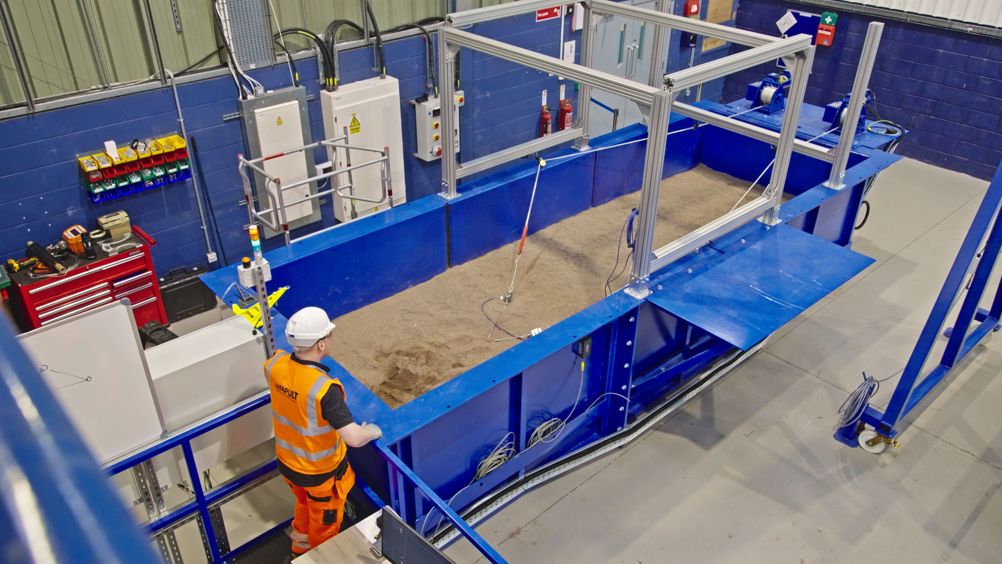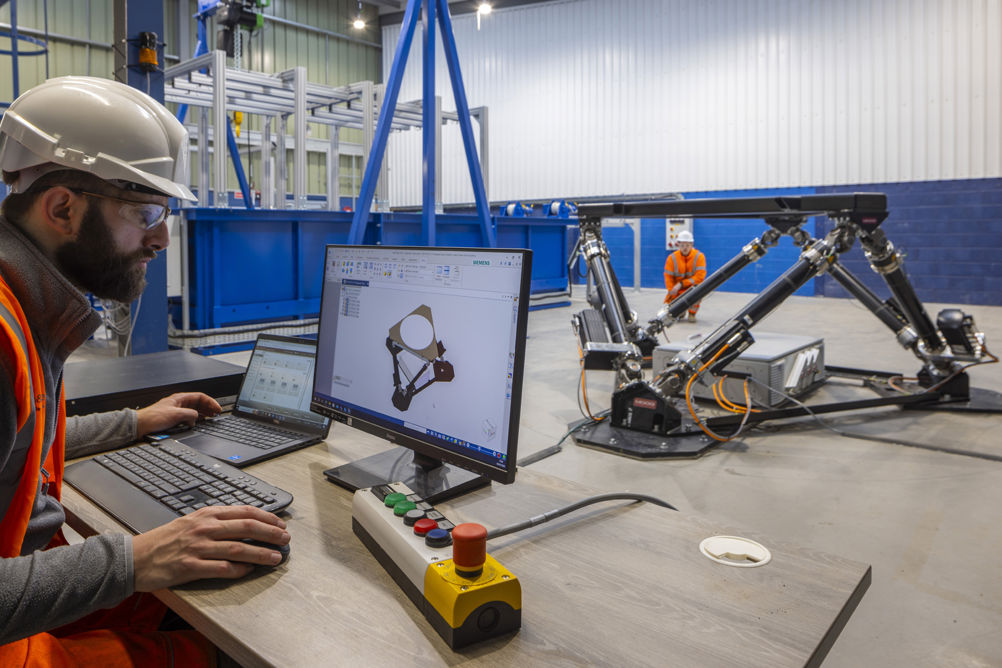Already accounting for 15GW of installed capacity, offshore wind has become a major contributor to the UK’s electricity requirements, generating 17 per cent of our total electricity in 2023.
But if we’re going to come anywhere near our 2050 net zero ambitions, we’ll need a lot more of it. And with pressures on seabed use around the UK growing, developers are increasingly excited about the prospect of using floating offshore wind technology - which uses turbines mounted on buoyant structures tethered to the seabed, rather than fixed foundations - to exploit the deeper, windier and hitherto largely untapped patches of ocean that lie further offshore.
A new innovation centre on the edge of Aberdeen is aiming to accelerate this expansion, building on the UK’s existing expertise in floating wind by providing access to a suite of specialised test facilities to help engineering firms in the region apply their deep-rooted offshore engineering knowledge to this exciting new frontier.
Currently all the technology is fixed bottom so it’s physically connected to the seabed. As you get beyond 30 or 40 GW you start to run out of fixed bottom space in the UK
Andy Macdonald - Director of Development and Operations, ORE Catapult
Set up to support the development and validation of key technologies required for floating wind - chiefly anchors, moorings and dynamic cable systems - the £9 million Floating Wind Innovation Centre (FLOWIC) is claimed to be the first dedicated facility of its kind in the world. Operated by the Offshore Renewable Energy (ORE) catapult - part of the UK’s network of nine sector focussed innovation hubs - it complements ORE’s existing testing facility further South in Blyth, Northumberland, where turbine blades, drivetrain technologies and electrical systems are put through their paces. As a key tenant for the Aberdeen Energy Transition Zone (ETZ) - a 250 Hectare site next to Aberdeen’s brand new £420 million deep-water harbour - the facility is also at the heart of wider plans to grow a major new regional cluster of net zero innovation.
Talking to The Engineer during a site visit earlier this year (May 2024) OREs’s director of development and operations Andy Macdonald claimed that floating wind will play a vital role in growing UK offshore wind capacity from where it is now to the estimated 100GW that will be required by 2050. “Currently all the technology is fixed bottom (monopiles or jackets) so it’s physically connected to the seabed,” he said, “As you get beyond 30 or 40 GW you start to run out of fixed bottom space in the UK.”
To date, global floating wind capacity is modest with just a handful of test and demonstration projects up and running. Indeed, the UK’s two existing projects, the 50MW Kincardine wind farm off Aberdeen (which is visible from the FLOWIC building) and the 30MW Hywind Scotland project off the coast of Peterhead, together represent more than a third of global installed capacity.

But the appetite for the technology is growing rapidly both around the world, and here in the UK. Indeed, the Crown Estate, which manages the seabed around England and Wales, estimates that floating accounts for 80 per cent of global offshore wind potential, whilst labour leader Sir Kier Starmer has pledged to invest heavily in the technology should his party win the July 2024 general election.
What’s more, the UK has one of the biggest pipelines of new projects in the world, with a total of 29 new floating wind projects so far securing seabed leasing deals, and a new leasing round (leasing round 5) looking at developing floating capacity in the Celtic Sea off the coast of Wales and South West England.
Unlocking this potential, however, presents some major technical challenges. Whilst most existing offshore wind turbines operate in water depths of up to around 50 metres and are mounted on foundations drilled into the seabed, moving into deeper water requires a fundamentally different approach.
Essentially, this involves mounting turbines to ballast-filled floating substructures that are anchored to the seabed via mooring lines. There are a number of different methods for developers to choose from: spar-buoy systems - narrow deep platforms extending up 100metres or more below the water; semi-submersible platforms, in which the turbines are mounted on a partially submerged series of connected columns; tensioned leg platforms (TLP) - in which the platform is moored to the seabed via vertical tensioned tethers; and barge mounted systems. Of the UK’s two existing floating wind farms, Hywind uses spar buoy technology, whilst Kincardine’s turbines are semi-subs.
Whilst each approach has different pros and cons, what they all have in common is a need for subsea mooring and anchoring technologies and a requirement for power cables able to deal with the rigours of floating operations. FLOWIC is focused on driving down the cost of these key enabling technologies.

The Engineer’s whistlestop tour of the facility begins in the cable testing hall, home to a bespoke £2million dynamic cable test rig. Designed and manufactured by Northumberland firm Osbit, this giant hydraulically-powered system will be used for fatigue testing of the subsea power cables that are used to link wind farms to the shore and to link turbines together in an array.
Whilst the power cables used for fixed bed wind turbines are typically well-protected from the ocean environment, those deployed on floating systems are far more exposed. Ensuring that they are designed to cope with this more dynamic environment is a key priority.
“For a traditional fixed bottom turbine, the cable goes down a pipe out the bottom and it’s buried, but for a floating platform the cable can move in the water column and that movement is enough to require different engineering in the design of the cable,” explained Macdonald. “It’s creating friction which creates heat, which means that the temperature of the cable will be slightly different. So you need it to be engineered for those different properties.”
The FLOWIC test rig works by applying a tensile load to a sample of cable and then vigorously waggling it back and forth through a range of different - and often quite extreme - angles. Designed to replicate 25 years of operation in the field, a typical test cycle will last for around six-months, during which time the cable will undergo around 1.5 million cycles. At the end of this process, FLOWIC engineers will dissect the cable to assess the level of mechanical fatigue and - all being well – validate it for use in floating applications.
In an adjacent hall, another key facility enables the testing of scaled down versions of the anchor systems that are used to hold floating wind turbines in place.
Often weighing up to 30 or 40 tonnes and measuring 6 metres across, the gigantic drag embedment anchors most commonly used for this application are understandably difficult to test, so an ability to validate scaled down versions is viewed as a key capability for accelerating the development of floating technology.

FLOWIC’s anchor testing facility features a series of sandpits and a complex system of winches and motors that can be used to pull scale models of anchors through the sand in a controlled manner from a variety of angles and directions in order to understand how different anchor designs will perform in different conditions.
Harvey North, FLOWIC’s Test Laboratory Manager for Technology and Development, explained that in order to mimic seabed conditions as closely as possible, the sand used is treated in a machine called a Pluviator, which enables the team to alter the density of the sand used and effectively dial up a range of different seabed conditions.
North added that as well as helping speed the validation of anchor designs, the facility could also prove key to addressing some of the unique geological challenges faced by floating wind farm developers. “One interesting point with the floating offshore wind farms that have been proposed is that the geology would change over the distance of a wind farm because they’re just that big, so there’s some testing to do there where we might be using different types of sand to replicate sea bed conditions across the wind farm.”
Once in place, despite the dynamic ocean environment, these anchors will not move. But above the surface it’s a different story. Indeed, whilst fixed bottom turbines are exactly that, ocean currents and waves can cause floating turbines to surge, sway, heave and roll, presenting a range of additional challenges, particularly in terms of maintenance.
In order to simulate this, FLOWIC is also equipped with a Hexapod motion platform, which is being used to replicate a variety of wave and tidal conditions. One particular area of focus is the test and validation of techniques to deal with the challenge of transferring people and equipment from a transfer vessel to a floating turbine. North explained: “One of the challenges of floating wind as opposed to fixed is that for fixed you can put a jack up next to it with a crane. The turbine’s fixed and you go from fixed to fixed. But as soon as you’ve got a floating platform, lifting things…suddenly becomes very difficult.”

To address this, the team is currently validating an electric lifting system that compensates for the relative movement of the vessel and the turbine tower. Developed by Scottish firm Pict Offshore, this so-called GUS (Get Up Safe) system can be operated from the crew transfer vessel and uses laser based deck-tracking technology to see how the platform and vessel are moving in relation to one another and ensure that the turbine platform can be safely loaded.
It’s early days at FLOWIC. At the time of The Engineer’s visit, key systems were still in the process of being commissioned. But according Macdonald the facility is already attracting a great deal of interest. With firms queuing up to use its test rigs, and broader signs that that hoped-for clustering effect is already underway, FLOWIC looks set to play a key role in the UK’s fast-growing floating sector.
Beyond its regional impact, Macdonald-believes that - given the growing international interest in floating wind - the centre could ultimately help open up key opportunities to export UK technology and expertise around the world. He added that despite its UK focus, the facility has already generated interest from projects in Japan, the United States, Brazil and India.
“We’re primarily about driving UK economic growth, net zero and energy security – our aim is to benefit the UK” he said. “But we’re inherently interested in what’s happening globally. Most of the oil and gas work done in Aberdeen is for the whole word and you want the same for offshore wind!”












Radio wave weapon knocks out drone swarms
Probably. A radio-controlled drone cannot be completely shielded to RF, else you´d lose the ability to control it. The fibre optical cable removes...